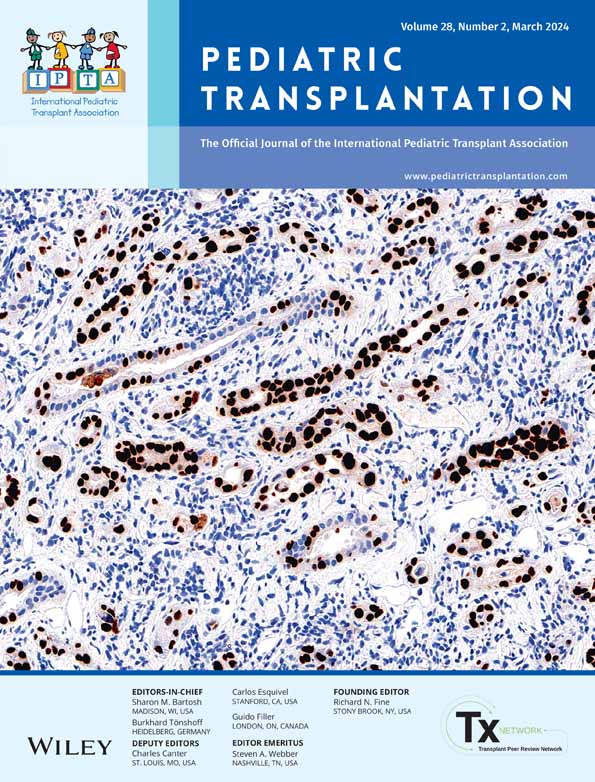Leflunomide as adjunct therapy for BK viremia management in pediatric kidney transplant recipients
Abstract
Background
BK viremia after kidney transplantation (KT) poses significant risk for BK virus-associated nephropathy and impacts graft survival. Conventional treatment involves reduction of immunosuppression, which in turn may increase risk for rejection. To address this dilemma, use of anti-viral therapy with immunosuppressive properties such as leflunomide is an attractive option.
Methods
We performed a multi-center, retrospective chart review to report tolerability and effectiveness of leflunomide use for the eradication of BK viremia and prevention of BK virus-associated nephropathy in pediatric KT recipients.
Results
Seventy patients prescribed leflunomide were included and were followed up from initiation until 1 year following leflunomide completion. BK viremia was eradicated in 64 (91.4%) patients including 8 of 11 with nephropathy (BKVN) on initial biopsy. Reduced anti-proliferative medication (AP) dosing was not associated with increase in biopsy proven rejection (BPAR). However, complete discontinuation of AP during leflunomide therapy was associated with increase in BPAR in uni- and multivariate logistic regression, as was targeted reduction in calcineurin inhibitor (CNI) trough goals. One graft was lost to BKVN. There was no significant association found between time to BK eradication and leflunomide trough concentration, mycophenolate dose reduction, or steroid use (univariate logistic regression). Few leflunomide adverse drug reactions (ADR) were reported (most commonly: gastrointestinal, hematologic).
Conclusion
Leflunomide is a promising adjunctive treatment to immunosuppression reduction for BK virus eradication with minimal ADR. AP reduction, not discontinuation, and judicious reduction in CNI trough goals with close monitoring, is a promising strategy for treatment of BK viremia with concomitant use of leflunomide therapy.
CONFLICT OF INTEREST STATEMENT
The authors do not have any conflict of interest to declare.
Open Research
DATA AVAILABILITY STATEMENT
The data that support the findings of this study are available from the corresponding author upon reasonable request.




